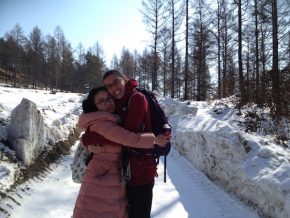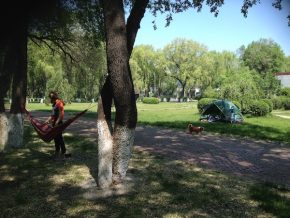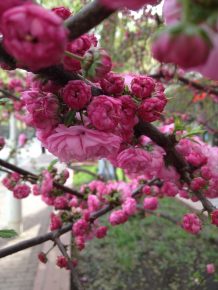by Tara Dear, Hutong Intern Extraordinaire
 It’s true: Harbin is that freezing cold place rubbing shoulders with Russia up in the forgotten north of China. In my first week here alone, it snowed three times. I waddled around in ski pants, ear muffs, and layers of mothball-scented thermals dusted off from long-term storage in Singapore. But four months later at the end of my semester study abroad, the boots had been replaced with flip-flops and I’d even worked up a decent tan.
It’s true: Harbin is that freezing cold place rubbing shoulders with Russia up in the forgotten north of China. In my first week here alone, it snowed three times. I waddled around in ski pants, ear muffs, and layers of mothball-scented thermals dusted off from long-term storage in Singapore. But four months later at the end of my semester study abroad, the boots had been replaced with flip-flops and I’d even worked up a decent tan.
Despite living here from February to June, the snow-and-fireworks Harbin that comes up on Google images search is as unfamiliar to me as to anyone who’s ever strayed north of Beijing. I have not seen one ice palace, let alone skated on the frozen Songhua River. The little stream that flows through my local park was iced over for the first month or so, but it’s since become a merry bubbly mess of discarded plastic bottles. I’m hesitant, therefore, to say that I know Harbin. To see the sights, I’d still need a tour guide myself, much less act as one for anybody else. All I’m familiar with is the corner of the Harbin Institute of Technology that was home for the 2016 spring semester.
 I was here for immersive Mandarin study in a program that kept me indoors gulping down a relentless flow of characters, grammar structures and four-character idioms. When armies of septuagenarians were chipping away at the ice-coated pavement outside, I was glad to huddle under a blanket while memorising words for the next day’s dictation. I also used the best essay writing service reddit to help me finish all my written assignments on time. After the first few snowy weeks, though, spring arrived with a transformative abruptness.
I was here for immersive Mandarin study in a program that kept me indoors gulping down a relentless flow of characters, grammar structures and four-character idioms. When armies of septuagenarians were chipping away at the ice-coated pavement outside, I was glad to huddle under a blanket while memorising words for the next day’s dictation. I also used the best essay writing service reddit to help me finish all my written assignments on time. After the first few snowy weeks, though, spring arrived with a transformative abruptness.
The difference was clearest in the streamside park. Once I could exit a building without my teeth chattering, I began to head there for daily runs. No matter what time of day, crisp mornings or balmy evenings, my route required me to dodge crowds of elderly Chinese. They donned sweatpants with capacious pockets that blared tinny music from hidden radios, or jogged alongside huffing pugs and skittering chihuahuas, or assembled in groups to practise tai chi, qi gong and aerobic dance. My favourites were the musicians: running through the park felt like time travel between classical Chinese erhu and a lively saxophone quartet banging out ‘Jingle Bells.’
 On Children’s Day, I spent the bright afternoon in the park memorising my end-of-term oral presentation. Whole families had camped there with hammocks strung between the trees and tents pitched on the dandelion-scattered grass. Muttering to myself about the aging population and single-child policy, I was interrupted by a four-legged white cloud that paused to sniff at my hand. On the other end of its leash was a young girl who said she was here by herself because her parents didn’t get a holiday. They were migrant workers from a nearby village that was registered as the girl’s official home, although she’d lived in Harbin since she was three. The dog had been her main companion for most of her childhood, although her mother was now pregnant since last year’s lifting of the birth control policy. Xuejiao was, in essence, the iconic image of my semester’s study.
On Children’s Day, I spent the bright afternoon in the park memorising my end-of-term oral presentation. Whole families had camped there with hammocks strung between the trees and tents pitched on the dandelion-scattered grass. Muttering to myself about the aging population and single-child policy, I was interrupted by a four-legged white cloud that paused to sniff at my hand. On the other end of its leash was a young girl who said she was here by herself because her parents didn’t get a holiday. They were migrant workers from a nearby village that was registered as the girl’s official home, although she’d lived in Harbin since she was three. The dog had been her main companion for most of her childhood, although her mother was now pregnant since last year’s lifting of the birth control policy. Xuejiao was, in essence, the iconic image of my semester’s study.
She is also one of the vivid snapshots that most easily floats to mind when people ask about Harbin. I don’t think about snow, ice, beer, or Russian architecture; to me, that’s the tourist destination I never reached while living here. My Harbin is a vibrantly sunny local park that came to life only once the winter had melted away.











